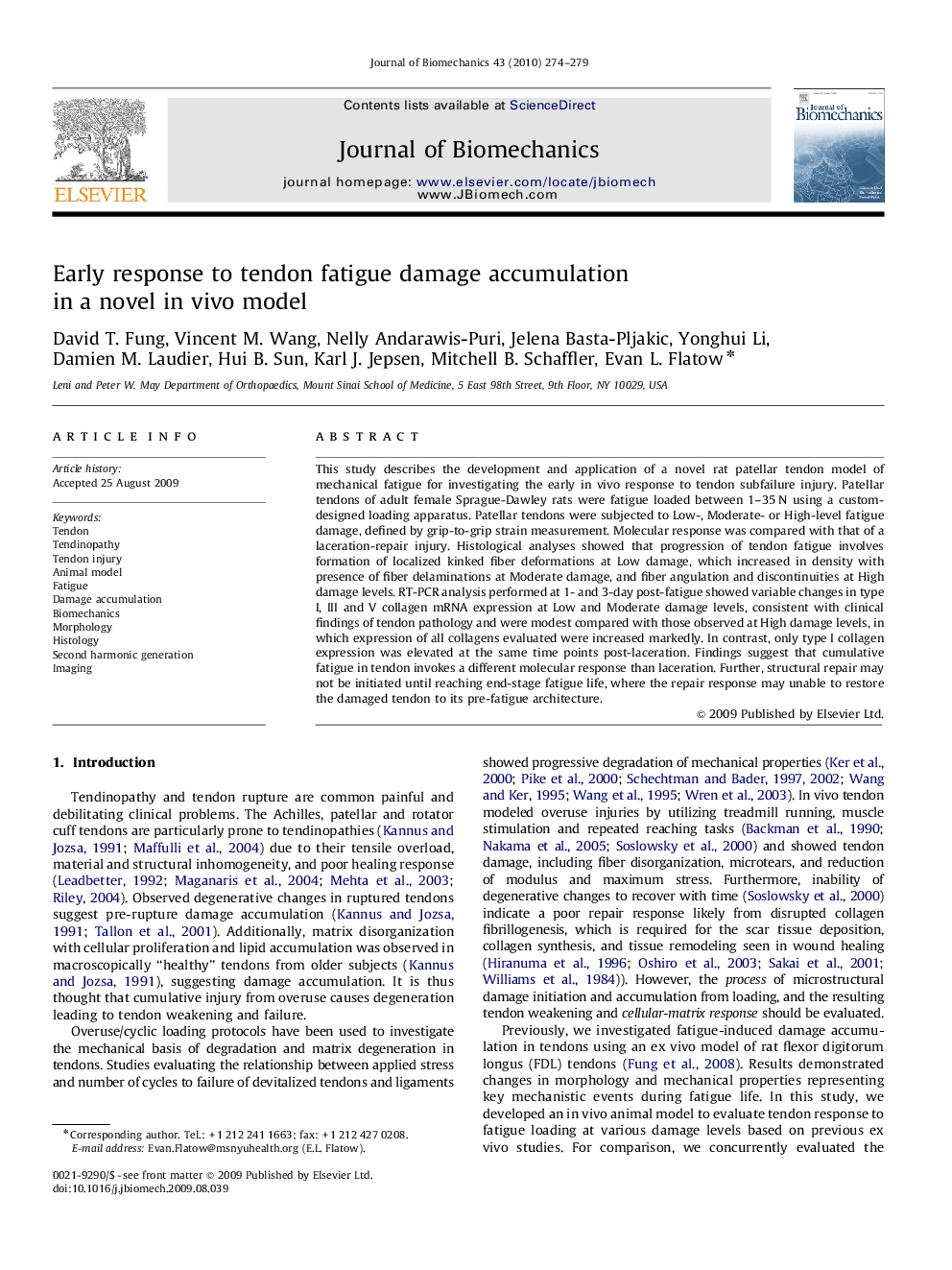| Article ID | Journal | Published Year | Pages | File Type |
|---|---|---|---|---|
| 872632 | Journal of Biomechanics | 2010 | 6 Pages |
This study describes the development and application of a novel rat patellar tendon model of mechanical fatigue for investigating the early in vivo response to tendon subfailure injury. Patellar tendons of adult female Sprague-Dawley rats were fatigue loaded between 1–35 N using a custom-designed loading apparatus. Patellar tendons were subjected to Low-, Moderate- or High-level fatigue damage, defined by grip-to-grip strain measurement. Molecular response was compared with that of a laceration-repair injury. Histological analyses showed that progression of tendon fatigue involves formation of localized kinked fiber deformations at Low damage, which increased in density with presence of fiber delaminations at Moderate damage, and fiber angulation and discontinuities at High damage levels. RT-PCR analysis performed at 1- and 3-day post-fatigue showed variable changes in type I, III and V collagen mRNA expression at Low and Moderate damage levels, consistent with clinical findings of tendon pathology and were modest compared with those observed at High damage levels, in which expression of all collagens evaluated were increased markedly. In contrast, only type I collagen expression was elevated at the same time points post-laceration. Findings suggest that cumulative fatigue in tendon invokes a different molecular response than laceration. Further, structural repair may not be initiated until reaching end-stage fatigue life, where the repair response may unable to restore the damaged tendon to its pre-fatigue architecture.
